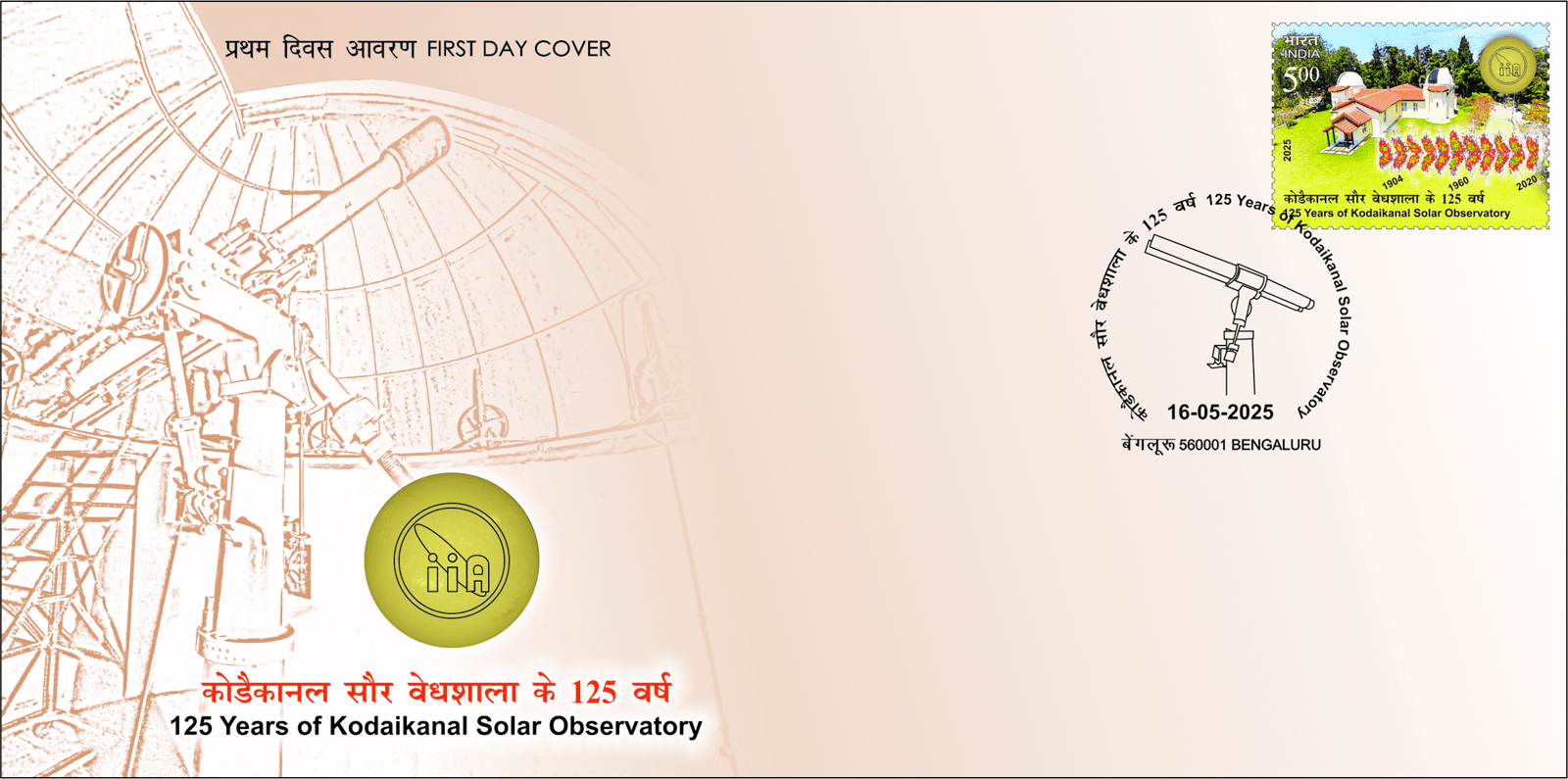Kodaikanal Solar Observatory

Technical Data
| Date of Issue | May 16, 2025 |
|---|---|
| Denomination | Rs. 5 |
| Quantity | 303,660 |
| Printer | Security Printing Press, Hyderabad |
| Printing Process | Wet Offset |
| Colors | Multicolor |
| Credit (Designed By) | Sh. Brahm Prakash |
| Catalog Codes |
Michel IN 2025.05.16-01 |
| Themes | Astronomy | Buildings | Observatories |
125 Years of Kodaikanal Solar Observatory Stamp – A Tribute to India’s Solar Legacy
Nestled in the serene Palani Hills of Tamil Nadu, the Kodaikanal Solar Observatory (KSO) has stood as a beacon of astronomical research for more than a century. Established on 1 April 1899 and operated by the Indian Institute of Astrophysics, it is the longest-running solar observatory in India and one of the few in the world with continuous daily solar records.
Origins and Legacy
The KSO was originally an extension of the Madras Observatory (1792), but its focus shifted exclusively to solar observation due to Kodaikanal’s strategic high-altitude location (2,343 m), offering pristine skies and stable atmospheric conditions. Over the years, it has become the foundation of India’s solar physics research.
Scientific Breakthroughs
One of the most celebrated achievements at KSO was the discovery of the Evershed Effect in 1909 by astronomer John Evershed. This groundbreaking observation—gases moving outward from the sunspot penumbra into the photosphere—redefined our understanding of solar magnetic fields. A centennial stamp in 2008 already honored this discovery, underlining its global impact.
Beyond this, KSO scientists have conducted pioneering research on:
- Sunspots and solar flares
- Prominences and the solar corona
- Magnetic field activity cycles
- Solar-terrestrial interactions affecting climate and communication
Its contributions also extend to ionospheric research, helping us understand the Sun’s influence on radio communication and satellite systems.
Preserving the Sun’s Story
For over a century, KSO has meticulously photographed the Sun’s photosphere and chromosphere on plates and films. These precious records, covering sunspots, plages, filaments, and flares, have now been digitized, making them accessible to researchers across the world. This archive is one of the richest legacies of solar data globally.
A Living Institution
KSO is not only a hub for advanced solar physics but also a place of learning and outreach. Generations of Indian astronomers have been trained here through workshops and schools. Its modern astronomy museum attracts nearly 50,000 visitors annually, inspiring students and the public alike.
The Commemorative Stamp
To mark this milestone, the Department of Posts has issued the “125 Years of Kodaikanal Solar Observatory Stamp.” This commemorative release is a tribute to the observatory’s historic role in shaping solar science and India’s contribution to global research.
The stamp honors KSO’s scientific achievements, enduring heritage, and continued relevance in a world increasingly reliant on understanding the Sun’s influence on Earth.
The 125 Years of Kodaikanal Solar Observatory Stamp is more than a collector’s piece—it is a celebration of India’s astronomical excellence, preserving the light of the Sun for generations past, present, and future.
First Day Cover

